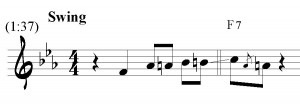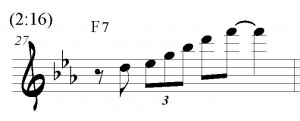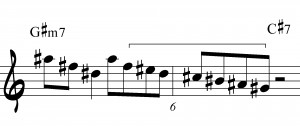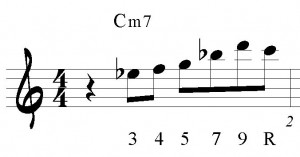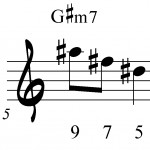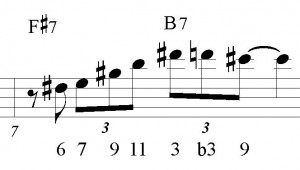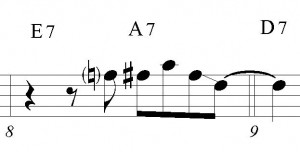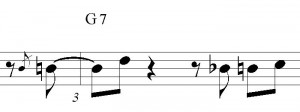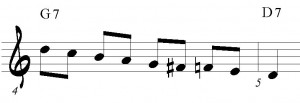Work Song is one of those classic tunes of the Hard Bop Era I love to play and listen to. It is bluesy, funky, and soulful. Everything that Hard Bop is, so adding Wes Montgomery into the mix is pure Hard Bop nirvana.
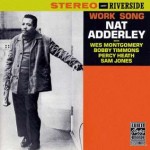
Work Song was written by Nat Adderley and recorded on the album of same name issued on the Riverside label. Cornetist Nat Adderley is joined by Wes on guitar as well as Bobby Timmons on piano, Percy Heath on bass, and the great Louis Hayes on drums. It was recorded on January 27, 1960.
What struck me right way is that one cannot always rely chord changes in the fake book. I’ve always played the tune with the Fm7 as the tonic, but it is clear that the boys here are playing an F7. The A-natural becomes a central note that Wes will emphasize throughout his two choruses.
What continues to astonish me, and why Wes Montgomery is my go-to-guy for inspiration, is his ability to create solos as if they were conceived from beginning to end before he plays them. The themes are woven in and out, developed, and comeback in new forms later as if he planned it that way from note-one.
He begins with a simple and bluesy melody, outlining the F triad with the chromatic passing tones Ab (flat-3rd) into A (3rd) and the B (sharp-4th) into the C (5th) in measures 1-2. This theme gets developed, always returning the A-flat as the grace note sliding into the A-natural. He ends his theme and development in measures 6-7 with an enclosure of the 3rd.
Wes begins the second half of his first chorus continuing to develop these grace notes as a theme while he outlines the F7 chord in measures 11-13.
He ends the first chorus with lick over the Db7-C7 in measure 16, that I closely associate with Wes, one of is few signature licks if you will. Wes seems to ignore the Db7 and atticapates the C7 by chromatically descends from the root (C) to the flat-seventh (Bb) (the bebop scale some may call it) and then back up to the root before anticipating the F7 on beat three, playing up to the 3rd (A). Using anticipations is a harmonic device that adds unique tension to a solo and Wes was very skilled at. Montgomery’s uses of anticipations can be traced back to his study of Charlie Christian, who was a master at this device and was one of Wes’ main influences. The lick itself is definitely a lick I suggest adding to your vocabulary, it is short, sweet, to the point, and allows you to add many, many variations to it.
His second chorus begins with a descending F minor pentatonic scale (m.19), before digging into a fantastic melody that ends with him emphasizing the 13th (A), root, and 9th (D) of the C7 and resolving the D down to the Eb (7th) on F7 [measures 24-26].
In measure 27 we encounter another rare Wes Montgomery “lick,” but one that he is most fond of. He ascends a major 7/9 arpegio beginning on the flatted seventh of a dominant chord (F7). This outlines the flat-7 (Eb), 9 (G), 11 (Bb), 13 (D), and root (F).
Measures 28 through 30 have elements of call and response, in which Montgomery descends the F bebop scale in sixteenth notes to begin a two bar melody that encloses the 5th (C) and 3rd (A) of the F7. He then repeats the same rhythm, descending chromatically from the Ab to F to answer that melody in measure 30, enclosing the Bb in measure 31.
Wes ends his solo with brief octaves, emphasizing the Ab to bring the solo back to it’s bluesy roots (measures 31-34).
This solo is the perfect balance of soulfulness and adventurous lyricism. It is a solo As with every Wes Montgomery solo, I want to not just play the correct notes, but how he played those notes. Trying to match the intensity, dynamics, feel, and color he plays each note I want to emulate and absorb, hoping someday, some of that will get into my soul and out my guitar too.
PDF copy of Work Song Solo
